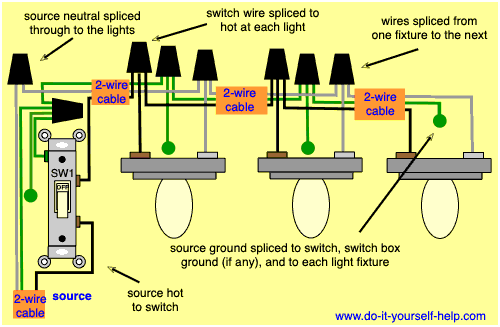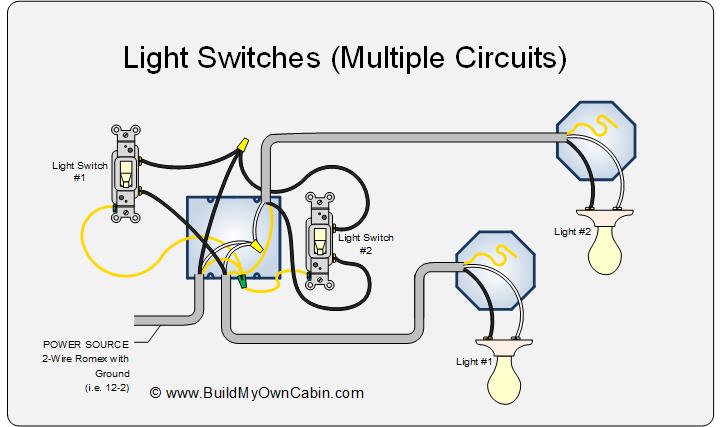
This wiring system may still be encountered in old "grandfathered" electrical installations.

Wire multiple lights one switch code#
This now-obsolete wiring method has been prohibited by the USA National Electrical Code since 1923, even in new knob-and-tube installations which are still permitted under certain circumstances.

The Carter system was a method of wiring three-way switches in the era of early knob-and-tube wiring. The Carter system is prohibited in the USA. If only one light is being switched and no unswitched connection is needed, this system uses more long wires than the standard system (four instead of three), but if the switched light is close to the switch near the fuse box and a receptacle needs to be powered near the far switch it will use fewer long wires (four instead of five). This is useful in long hallways that may need more than one light to be controlled by the two switches, and which may also have receptacles needing unswitched power as well as the switched lights. An optional receptacle can be connected at Terminal B, since that terminal is always live.Īn alternative system, known as the "California 3-way", or "coast 3-way" connection system allows both switched and unswitched loads to be connected near both switches without running too many additional wires. An optional additional lamp can be connected at Terminal A as a pilot lamp, or to illuminate a long corridor. The "California 3-way" or "Coast 3-way" connection never connects the lamp socket shell to the line (hot) terminal. Using the traveler system, there are four possible permutations of switch positions: two with the light on and two with the light off. In the traveler system, also called the "common" system, the power line (hot, shown in red) is fed into the common terminal of one of the switches the switches are then connected to each other by a pair of wires called "travelers" (or "strappers" in the UK), and the lamp is connected to the common line of the second switch, as shown. There are several arrangements of wiring to achieve this. Switching a load on or off from two locations (for instance, turning a light on or off from either end of a flight of stairs) requires two SPDT switches. Toggling any switch changes the state of the load from off to on, or from on to off. An intermediate switch can, however, be implemented by adding appropriate external wiring to an ordinary (six terminal) DPDT switch, or by using a separate DPDT relay.īy connecting one or more 4-way (intermediate) switches in-line, with 3-way switches at either end, the load can be controlled from three or more locations. This switch has two pairs of "traveler" terminals that it connects either straight through, or crossed over (transposed, or swapped). Ī "4-way" (intermediate) switch is a purpose built double pole, double throw (DPDT) switch, internally wired in manufacture to reverse the connections between the input and output and having only four external terminals. The switches may be arranged so that they are in the same orientation for off, and contrasting orientations for on. By correctly connecting two of these switches together, toggling either switch changes the state of the load from off to on, or vice versa. Toggling the switch disconnects one "traveler" terminal and connects the other.Įlectrically, a typical "3-way" switch is a single pole, double throw (SPDT) switch. These switches appear externally similar to single pole, single throw (SPST) switches, but have extra connections which allow a circuit to be controlled from multiple locations. Three-way and four-way switches make it possible to control a light from multiple locations, such as the top and bottom of a stairway, either end of a long hallway, or multiple doorways into a large room. The electrical load may be permanently hard-wired, or plugged into a switched receptacle.

The controlled load is often a lamp, but multiway switching is used to control other electrical loads, such as an electrical outlet, fans, pumps, heaters or other appliances. Readers in most other countries should read "two-way" or "SPDT" for the United States "three-way" and "intermediate", "crossover" or "DPDT" switch for the United States "four-way".

This article follows usage in the United States.


 0 kommentar(er)
0 kommentar(er)
